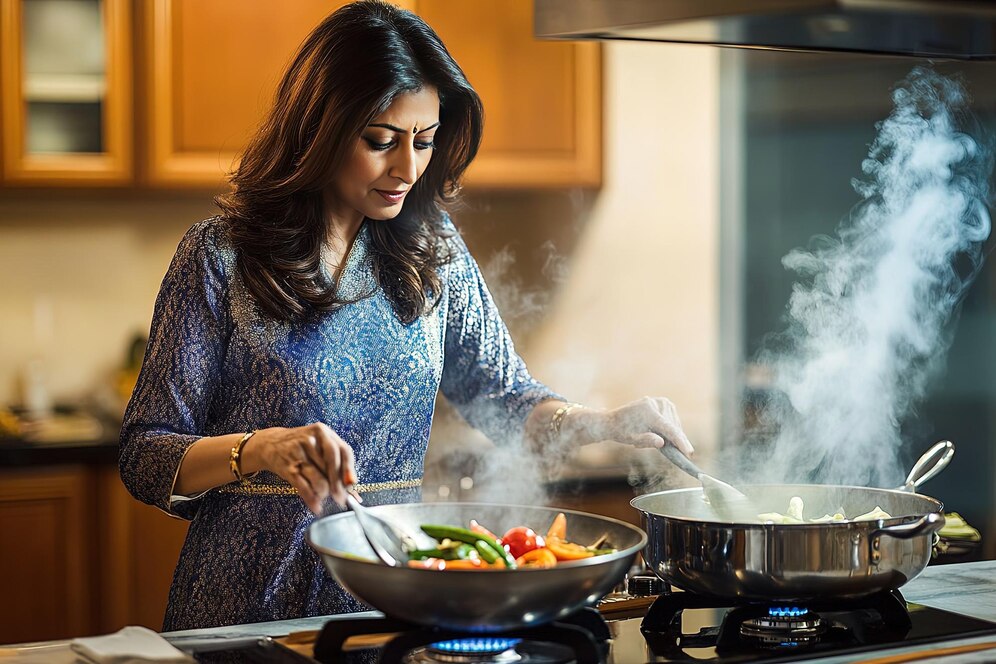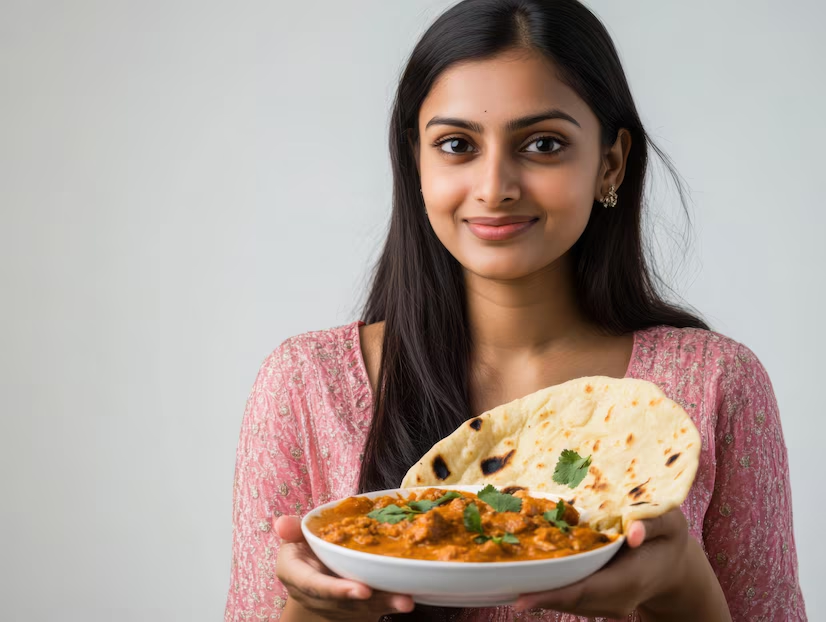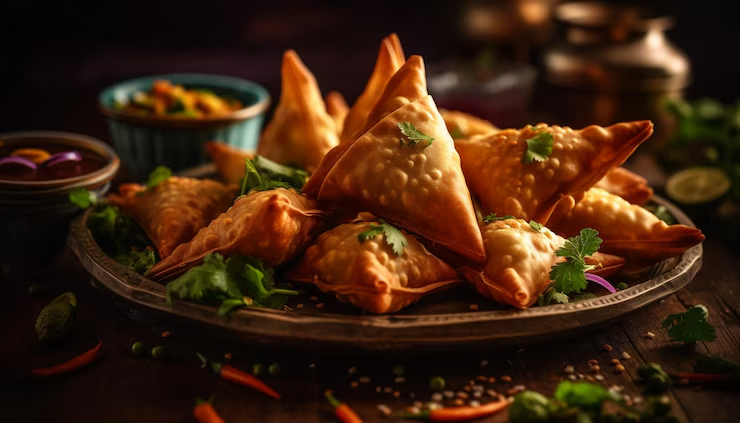Contents
- 1 Ten Ways to Stop Your Kitchen from Wasting Food
- 1.1 1. Make a plan for what you will eat before you go grocery shopping
- 1.2 2. Keep food in the right place
- 1.3 3. Know what “Use By” and “Best Before” dates mean
- 1.4 4. Follow the “First In, First Out” Rule
- 1.5 5. Be creative with leftovers
- 1.6 6. Put food in the freezer for later
- 1.7 7. Use up leftover food
- 1.8 8. Give Smaller Portions
- 1.9 9. Keep an eye on your trash
- 1.10 10. Go shopping more often, but buy less
- 1.11 Final Thoughts
- 1.12 FAQs
- 1.12.1 1. Why is it important not to waste food?
- 1.12.2 2. What can I do to waste less food at home?
- 1.12.3 3. What foods do people throw away the most?
- 1.12.4 4. How long can I safely keep food in the fridge?
- 1.12.5 5. Is it safe to eat food after the “best before” date?
- 1.12.6 6. What is the best way to keep fruits and vegetables fresh?
- 1.12.7 7. What can I do with leftover food?
- 1.12.8 8. Is it okay to freeze food to keep it from going bad?
- 1.12.9 9. How can I prevent food waste when cooking for my family?
- 1.12.10 10. Are there apps that can help with food waste?
- 1.12.11 11. What’s the difference between recycling food and composting it?
- 1.12.12 12. How can cutting down on food waste help you save money?
Ten Ways to Stop Your Kitchen from Wasting Food
Food waste is a growing problem. It may not seem like a big deal at home, but it has a big effect on the world. Almost a third of all the food made for people to eat is thrown away every year, according to the UN. Not only food is wasted; water, energy, and money are too. Most of the food we throw away is in our kitchens, which is good news because we can do something about it.
We can cut down on waste, save money, and make our kitchens work better by making small changes to how we shop, cook, and store food. Here are ten easy but useful tips for Indian kitchens that can help cut down on food waste.
1. Make a plan for what you will eat before you go grocery shopping
Buying more food than we need is one of the main reasons why food goes bad. Plan your meals for the week before you go to the market to avoid this. Look in your pantry and fridge to see what you already have, and then make a shopping list based on that.
Only buy what you need, and don’t buy in bulk unless you’re sure you’ll use it all up. Stick to your list to avoid buying things on a whim, especially things like fruit, vegetables, or snacks that might go bad.
Tip of the Day:
- Keep track of your meals and shopping list with a meal-planning app or a simple notebook.
- This is helpful when you need to use the same ingredients in more than one dish.
Learn more about meal planning at Love Food Hate Waste.
2. Keep food in the right place
Keeping food fresh for longer depends on how you store it. In India, where it can be hot and humid, it’s even more important to store things correctly. Store fruits and vegetables in different places. Some fruits and vegetables, like bananas, tomatoes, and apples, give off ethylene gas, which can speed up the ripening and spoiling of other fruits and vegetables nearby.
Put leftovers in containers that are airtight and write the date on them so you don’t forget them. To keep moisture and bugs out, store dry foods like rice, lentils, and flour in airtight containers.
Tip:
- For easy viewing, use containers made of clear glass or plastic. If you can see the food, you’re more likely to eat it.
3. Know what “Use By” and “Best Before” dates mean
Food is often thrown away too soon because of confusing labels. “Use by” dates are about food safety; they tell you when you should eat the food. “Best before” dates are about how good the food is. After that date, the food might not taste as fresh, but it’s usually still safe to eat.
Check something before you throw it away. It’s good to go if it smells, looks, and tastes good.
To learn more:
Visit the Food Safety and Standards Authority of India (FSSAI) for guidance on food labeling.
4. Follow the “First In, First Out” Rule
When the kitchen is busy, it’s easy to forget what you already have in the fridge or pantry. Follow the “First In, First Out” rule to keep food from going bad. Put older things in front of the shelves and newer things in back. This makes sure you use the older stock before it goes bad.
Extra Tip: Write the date you bought something on it with a marker, especially if it has a short shelf life.
5. Be creative with leftovers
Don’t throw away leftovers; make new meals out of them.
- Leftover dal → soup or curry
- Stale chapatis → bhurji or bread pudding
- Old vegetables → soup or upma
One night a week should be “leftover night.” You can make a fun, no-waste dinner by mixing together what’s in the fridge.
Bonus: Ask your family to make the most creative dish they can with leftovers!
6. Put food in the freezer for later
When it comes to cutting down on food waste, your freezer can be your best friend. Freezing food that might go bad, like leftover curry, chopped vegetables, or fresh herbs (frozen in ice cubes with olive oil), helps you keep it fresh.
Tip: Freeze leftovers in single-serving sizes so you can only thaw what you need.
7. Use up leftover food
Before you throw away food scraps, think about how you can use them again. Make vegetable stock with peels, stems, and onion skins. Use fruit peels to make zests for curries or chutneys, or as a natural cleaner.
Composting is a great way to get rid of scraps that you can’t use again. It makes soil full of nutrients.
Pro Tip: Use a small “scrap bowl” at the end of the week for compost or stock.
8. Give Smaller Portions
When having family meals or guests, serve smaller portions. Ask people to come back for more instead of filling plates too full.
Related: Global Flavors: Your Ultimate Food Adventure
Interesting Fact: Cutting plate size by 2 inches can reduce food waste by almost 20%.
9. Keep an eye on your trash
Tracking what you throw away is the first step in cutting down on waste. Note what items are wasted and why. This helps you see patterns and make better buying decisions.
Tool Tip: Apps like Olio or Too Good To Go can help track expiration dates, share extra food, and use leftovers creatively.
10. Go shopping more often, but buy less
Buying food in smaller amounts more often can help cut down on waste. Visit local markets two to three times a week instead of one big shopping trip. This keeps track of pantry items and prevents food from spoiling.
Pro Tip: Buy fresh fruits and vegetables in smaller amounts, especially perishable ones.
Final Thoughts
To cut down on food waste, make small, thoughtful changes in your kitchen. You can save money, help the environment, and get the most out of the food you buy by planning meals, freezing leftovers, and using food scraps in new ways.
Food is important in Indian culture, and wasting it goes against respecting resources. Every small step you take benefits the environment, your wallet, and the community.
Next time you are about to throw something away, ask yourself if you can store it, use it in another dish, or make something useful. You probably can, and your kitchen and the world will thank you.
Must read: 5 Popular Dining Styles Ranked: Street Food to Fine Dine
FAQs
1. Why is it important not to waste food?
Cutting down on food waste is good for both your wallet and the environment. Wasting food also wastes water, energy, and labor. Less waste reduces greenhouse gas emissions.
2. What can I do to waste less food at home?
Plan meals, store food properly, use up leftovers, and freeze extra ingredients. Monitor expiration dates and use what you already have before buying more.
3. What foods do people throw away the most?
Fresh fruits and vegetables, bread, dairy products, and cooked meals. Proper planning and storage reduce this waste.
4. How long can I safely keep food in the fridge?
Most leftovers last 3–4 days in airtight containers. Always label containers with the date.
5. Is it safe to eat food after the “best before” date?
Yes. “Best before” indicates quality, not safety. If it smells, looks, and tastes fine, it is safe to eat.
6. What is the best way to keep fruits and vegetables fresh?
- Berries, leafy greens, apples → fridge
- Potatoes, onions, bananas → room temperature
- Keep ethylene-producing fruits like apples and tomatoes away from others
7. What can I do with leftover food?
Make vegetable stock, use fruit peels for zest or cleaning, or compost scraps to reduce waste.
8. Is it okay to freeze food to keep it from going bad?
Yes. Freeze cooked meals, leftover curry, chopped vegetables, or bread. Label with date and contents.
9. How can I prevent food waste when cooking for my family?
Serve smaller portions and plan one night a week as “leftover night.”
10. Are there apps that can help with food waste?
Yes, apps like Olio, Too Good To Go, and NoWaste help track expiry dates, share extra food, and reduce waste.
11. What’s the difference between recycling food and composting it?
Composting food scraps like vegetable peels and coffee grounds creates nutrient-rich soil. Plastic and glass packaging can be recycled.
12. How can cutting down on food waste help you save money?
Buying less and using leftovers reduces expenses. Over time, planning and smart usage save a significant amount on groceries.





